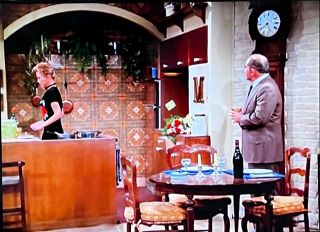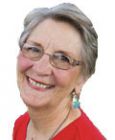Gender
Why Mary Richards's Second Apartment Always Bugged Me
Personal Perspective: It showed how confused we are about successful women.
Updated October 29, 2023 Reviewed by Gary Drevitch

Nearly 50 years ago, Mary Richards moved from her one-of-a-kind apartment in Minneapolis to a sterile high rise. I’ve never accepted it. I still wonder: What were you thinking, Mary? Now, after decades of processing, I instead wonder: What were you thinking, producers? Did you have any real understanding of what was happening in women’s lives at that crucial point in the 1970s? If that new apartment was supposed to be a reflection of a successful woman, they got it wrong.
I watched The Mary Tyler Moore Show when it first aired. Moore's character, Mary Richards, was just a few years older than me and lived an easy drive north of my Midwestern home, so I strongly related to her. I was also tall and skinny; we had similar wardrobes. I now can stream the show and revisit those days when women’s roles were expanding, and Mary was a symbol of the professional single woman. She was a big sister, beautiful and independent. While the show aired, I had two babies and bought a house while Mary remained contentedly single and untethered. I felt she was a different version of me: my “what if.” But that version of me would have never moved to that second apartment. And I remain bothered by the fact that Mary did.
Mary’s first apartment was iconic: The sweet kitchen with a stained-glass roll-down divider. The wall of windows with a view of trees, the cozy living room, the potbelly heating stove, the big M on the wall, the mysterious bathroom/dressing room, the inviting little table by the windows. Rhoda upstairs, Phyllis down.
The apartment said, “Sit down, friend, let’s visit.”
The new place was notable for an avocado and burnt orange tile wall that announced: The 80s are coming and they are tacky. The dowdy white brick fireplace was so close to the dining room table it had neither form nor function. The kitchen had nondescript brown cabinets and a bar that looked like an Avis rental counter. The big M was on the wall, but who cared?
That apartment said, “Come in and redecorate.”
A Woman's Place Is in a Bachelor Pad?
The show's producers (who included Moore, whose production company oversaw the show) apparently thought giving Mary Richards new digs would give the show more energy. But they moved Mary to the wrong place. By this time, her Rhoda and Phyllis had both left the show, so Mary lost and a bit of her mooring. She was moving up in the world, and was now a producer, so giving her a bigger apartment with an actual bedroom made sense. But what they chose looked like the kind of place men move into when they first get divorced.
At this time, Mary started wearing pants suits, an important fashion nod to women everywhere that it was OK to be comfortable at work. They often lacked the flair of her original wardrobe—a scarf often provided the only color, as with men’s ties. The year of the new apartment also marked a bad-hair year for Mary—sometimes she had big 80s bangs, sometimes a simple bob, sometimes she looked like the hairdresser got called away mid-comb. Mary’s sex life took a turn for the lively, but we never saw anything other than a long, chaste, kiss and lots of eyebrows lifting suggestively.
It’s like they didn't know what to do with Mary. Just what does a single, successful woman look like, and where does she live? If Mary’s original apartment was a dress, the new one was a suit. The old one was soft, the new one hard. It was a time of transition I remember well: How far could women “push” it before we were called mannish, intimidating, and aggressive?
The Golden Era of American Women's RIghts
Harvard professor Claudia Goldin, who was just awarded the Nobel Prize in economics, says the golden era of American women’s rights lasted from 1963 to 1973, which overlapped with the years the sitcom aired (1970 to 1976). That decade, Goldin writes in a working paper for the National Bureau of Economic Research, brought us “the Equal Pay Act of 1963, Title VII of the 1964 Civil Rights Act, the publication of The Feminine Mystique, the formation of the National Organization for Women (NOW), the shift to coeducation among many of the Ivies and little Ivies, the passage of the ERA in the House and Senate, Title IX of the 1972 Education Act, the spread of no-fault and unilateral divorce laws among the states, the first edition of Ms. Magazine, and Roe v. Wade, among other highlights.”
Mary was a pioneer, and the show demonstrated the growing pains of that era. As Goldin also writes, women’s accomplishments of that time faced a backlash that rumbled through the decades and have gained momentum lately. I was a young professional like Mary, and I understood her work challenges, her complicated life choices, and her friendships. To me, the original apartment reflected Mary. I wanted to live there. I still kind of do. The new one reflected some producer’s view of a woman’s life. I wanted no part of it.
I didn't like it at the time, but I’m more bothered by it now because of how the years of women’s progress are being whittled away. The apartment is a metaphor of how women are packaged and misunderstood. We are not men. We just want our brains to matter.
Mary was becoming a mature, capable woman in the series. The new apartment was clearly supposed to reflect that. To me it reflected a lack of understanding of who women were then and are now. The new apartment was a plot device, but not a character reflection. They took Mary Richards out of her comfortable home and put her in a harder shell, as though women couldn't be both soft and strong.
We’re still wrangling with the issue of a woman’s place. It can be just about anywhere—the office, the courtroom, the basketball court, the moon. But it’s also in the home: We have to live somewhere. Our homes reflect ourselves, and Mary’s new digs didn't. Even in the face of 1980s fashion, I think that Mary Richards, given the choice, would have done better.




